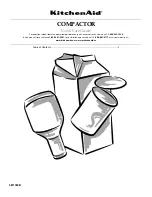
6-4
TroubleshooTing
if the battery goeS dead
The symptoms below indicate that the
battery is dead.
• The starter motor does not turn or fails to
start the engine.
• The horn is too weak.
Remedy procedure
Start the engine using the booster battery on
the other vehicle (booster vehicle) and the
jumper cables.
• When starting the engine using the
jumper cables, be sure to connect the
cables by following the proper steps.
Improper use of jumper cables can
result in battery explosion or
unexpected machine motion.
· Do not allow the booster vehicle and
the machine with a dead battery (dead
machine) to touch each other.
· Do not allow the positive (+) and the
negative (–) clips of the jumper cables
to touch each other.
· When connecting, attach the jumper
cable to the positive (+) terminals first.
When disconnecting, remove the
cable from the negative (–) terminal
(ground) first.
· Connect the last clip of the jumper
cable to a point as far away from the
battery as possible.
• Always wear the protective goggle when
jump starting the engine by using the
jumper cables.
IMPORTANT: Use the jumper cables and
clips of a size suited to the capacity of
battery. Do not use damaged or corroded
jumper cables and clips.
IMPORTANT: Be sure that the battery of
the booster vehicle has the same
capacity as the battery of the dead
machine.
IMPORTANT: Be sure to connect the clips
securely.
if the battery goeS dead
Connecting the jumper cables
IMPORTANT: Set the starter keys of the
booster vehicle and the dead machine to
the OFF position.
1. Connect the clip of jumper cable (R) to the
positive (+) battery terminal of the dead
machine.
2. Connect the other clip of jumper cable (R)
to the positive (+) battery terminal of the
booster vehicle.
3. Connect the clip of jumper cable (B) to the
negative (–) battery terminal of the booster
vehicle.
4. Connect the other clip of jumper cable (B)
to the engine block of the dead machine.
Connect the clip to a place as far from the
battery as possible.
Starting the engine
1. Check that the clips are securely
connected to the terminals.
2. Start the engine of the booster vehicle and
run it at high speed.
3. Start the engine of the dead machine.
Summary of Contents for TB216
Page 1: ......
Page 10: ...0 8 ...
Page 11: ...1 1 Safety ...
Page 46: ...1 36 Safety Safety signs decals ...
Page 47: ...1 37 Safety Safety signs decals ...
Page 48: ...1 38 Safety Safety signs decals ...
Page 49: ...1 39 Safety Safety signs decals ...
Page 50: ...1 40 ...
Page 51: ...2 1 Controls ...
Page 67: ...2 17 Memo ...
Page 83: ...2 33 Memo ...
Page 97: ...3 1 Operation ...
Page 127: ...4 1 Transport ...
Page 131: ...4 5 Transport Hoisting the machine Cab Canopy ...
Page 133: ...5 1 Maintenance ...
Page 165: ...5 33 Memo ...
Page 191: ...6 1 Troubleshooting ...
Page 205: ...7 1 Specifications ...
Page 208: ...7 4 Specifications Machine dimensions Cab Machine dimensions ...
Page 210: ...7 6 Specifications Machine dimensions Canopy ...
Page 212: ...7 8 Specifications Operating ranges Operating ranges ...
Page 214: ...7 10 Memo ...
Page 216: ...7 12 Specifications Long arm Cab Lifting Capacities ...
Page 217: ...7 13 Specifications Long arm Cab Lifting Capacities ...
Page 218: ...7 14 Specifications Long arm Canopy Lifting Capacities ...
Page 219: ...7 15 Specifications Lifting Capacities Long arm Canopy ...
Page 220: ...7 16 ...
Page 221: ...8 1 Options ...
Page 233: ...8 13 ...



































